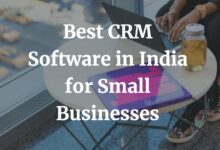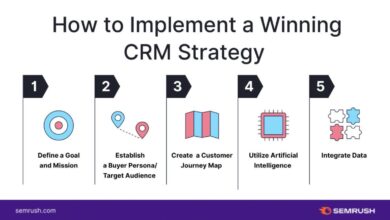Cloud Based CRM Systems Examples: 7 Ultimate Power Tools for Growth
In today’s fast-paced digital world, cloud based CRM systems examples are more than just software—they’re strategic power tools that drive sales, boost customer satisfaction, and scale with your business. Let’s explore the top platforms transforming how companies connect with customers.
What Are Cloud Based CRM Systems? A Quick Overview
Cloud based CRM systems examples have revolutionized how businesses manage customer relationships. Unlike traditional on-premise software, these platforms operate over the internet, allowing teams to access critical customer data from anywhere, on any device. This shift has made CRM tools more flexible, affordable, and scalable than ever before.
Definition and Core Functionality
CRM stands for Customer Relationship Management. At its core, a CRM system helps businesses manage interactions with current and potential customers. Cloud based CRM systems examples take this a step further by hosting all data and applications on remote servers, accessible via a web browser or mobile app.
- Centralized customer data storage
- Automated sales and marketing workflows
- Real-time collaboration across teams
- Integration with email, social media, and e-commerce platforms
This model eliminates the need for expensive hardware and IT maintenance, making it ideal for startups and growing enterprises alike.
How Cloud CRM Differs from On-Premise Solutions
Traditional CRM systems require businesses to install software on local servers and maintain them in-house. This often involves high upfront costs, complex updates, and limited accessibility.
In contrast, cloud based CRM systems examples offer a subscription-based model with automatic updates, built-in security, and seamless scalability. According to Gartner, over 80% of new CRM deployments are now cloud-based due to their agility and lower total cost of ownership.
“The cloud has become the default deployment model for CRM, offering unmatched speed, flexibility, and innovation.” — Gartner Market Guide for CRM
Top 7 Cloud Based CRM Systems Examples in 2024
Choosing the right CRM can be overwhelming. To help you decide, we’ve compiled a list of the seven most powerful cloud based CRM systems examples dominating the market in 2024. Each offers unique strengths tailored to different business needs.
1. Salesforce Sales Cloud
Salesforce is the undisputed leader in cloud based CRM systems examples, powering over 150,000 companies worldwide. Its Sales Cloud platform is a comprehensive solution for managing leads, opportunities, and customer interactions.
- AI-powered insights with Einstein Analytics
- Customizable dashboards and reporting
- Robust integration ecosystem via AppExchange
Salesforce excels in scalability, making it ideal for mid-sized to large enterprises. Its AI-driven forecasting helps sales teams predict revenue with up to 95% accuracy. Learn more at salesforce.com.
2. HubSpot CRM
HubSpot CRM is a favorite among small to medium-sized businesses for its user-friendly interface and free core features. It’s one of the most accessible cloud based CRM systems examples for startups.
- Free forever plan with essential CRM tools
- Seamless integration with marketing, sales, and service hubs
- Intuitive contact and deal tracking
What sets HubSpot apart is its inbound methodology, which aligns sales and marketing efforts around customer experience. Its automation tools reduce manual data entry by up to 70%. Explore it at hubspot.com.
3. Zoho CRM
Zoho CRM is a cost-effective powerhouse in the cloud based CRM systems examples landscape. It’s particularly popular among SMBs for its affordability and deep customization options.
- AI assistant (Zia) for predictive sales forecasting
- Multi-channel communication (email, phone, social)
- Workflow automation and approval processes
Zoho CRM supports over 50 languages and integrates with more than 40 business applications. Its pricing starts as low as $14/user/month, making it one of the most budget-friendly enterprise-grade CRMs. Visit zoho.com/crm for details.
4. Microsoft Dynamics 365 Sales
For organizations already using Microsoft 365, Dynamics 365 Sales offers seamless integration with Outlook, Teams, and Excel. It’s a top-tier choice among cloud based CRM systems examples for enterprise environments.
- Embedded AI for lead scoring and next-best-action suggestions
- Real-time collaboration through Microsoft Teams
- Advanced analytics with Power BI integration
Dynamics 365 is ideal for businesses that prioritize data security and compliance. It supports hybrid deployment models and is trusted by Fortune 500 companies. Learn more at dynamics.microsoft.com.
5. Pipedrive
Pipedrive is built for sales-focused teams who want a visual, pipeline-driven approach. Among cloud based CRM systems examples, it stands out for its simplicity and sales-centric design.
- Drag-and-drop sales pipeline management
- Activity reminders and automated workflows
- Mobile app with full functionality
Pipedrive’s interface is so intuitive that most users report being fully operational within a day. It’s perfect for small sales teams looking to close deals faster. Check it out at pipedrive.com.
6. Freshsales (by Freshworks)
Freshsales is an AI-powered CRM designed for high-velocity sales teams. It’s one of the fastest-growing cloud based CRM systems examples due to its smart features and ease of use.
- Lead scoring powered by machine learning
- Integrated phone and email within the CRM
- Visual deal timeline for tracking interactions
Freshsales automatically captures email and call data, reducing manual logging. Its AI assistant, Freddy, provides real-time coaching during sales calls. Discover more at freshworks.com.
7. Insightly
Insightly combines CRM with project management, making it a unique player among cloud based CRM systems examples. It’s ideal for service-based businesses and consultants.
- Project and task management within CRM
- Customer lifecycle tracking from lead to renewal
- Workflow automation and relationship linking
With Insightly, teams can manage client projects, deadlines, and communications in one place. Its two-way sync with Gmail and Outlook ensures no data is missed. Learn more at insightly.com.
Key Features to Look for in Cloud Based CRM Systems Examples
Not all cloud based CRM systems examples are created equal. To make the right choice, you need to evaluate platforms based on essential features that align with your business goals.
Scalability and Customization
Your CRM should grow with your business. Look for platforms that allow you to add users, modules, and custom fields without major overhauls.
- Custom objects and fields
- Role-based access control
- White-labeling options for agencies
Salesforce and Zoho CRM lead in customization, offering drag-and-drop builders and low-code development environments.
Integration Capabilities
A CRM is only as powerful as its integrations. The best cloud based CRM systems examples connect seamlessly with your existing tools.
- Email platforms (Gmail, Outlook)
- Marketing automation (Mailchimp, ActiveCampaign)
- E-commerce (Shopify, WooCommerce)
- Accounting software (QuickBooks, Xero)
HubSpot and Microsoft Dynamics 365 offer some of the widest integration networks, reducing data silos and improving workflow efficiency.
Mobile Accessibility and Offline Mode
With remote work on the rise, mobile access is non-negotiable. Top cloud based CRM systems examples provide full-featured mobile apps.
- Offline data entry and sync
- Push notifications for follow-ups
- Mobile reporting and dashboard access
Pipedrive and Freshsales offer robust mobile experiences, allowing sales reps to update deals and log calls from the field.
Benefits of Using Cloud Based CRM Systems Examples
Adopting a cloud based CRM isn’t just a tech upgrade—it’s a strategic move that impacts every part of your business.
Cost Efficiency and Predictable Pricing
Cloud CRMs eliminate the need for servers, IT staff, and large upfront investments. Instead, you pay a monthly or annual subscription.
- No hardware costs
- Lower maintenance expenses
- Pay-as-you-grow pricing models
According to Nucleus Research, businesses see an average ROI of $8.71 for every dollar spent on CRM, largely due to reduced operational costs.
Real-Time Data Access and Collaboration
With cloud based CRM systems examples, your team can access up-to-date customer information from any location.
- Remote team collaboration
- Shared calendars and task lists
- Live updates on customer interactions
This transparency reduces duplication of effort and improves response times, leading to higher customer satisfaction.
Automatic Updates and Security
Vendors handle software updates, security patches, and backups—so you don’t have to.
- Regular feature enhancements
- Enterprise-grade encryption
- Compliance with GDPR, HIPAA, and SOC 2
Salesforce, for example, invests over $1 billion annually in security and trust, ensuring data protection at scale.
Industries That Benefit Most from Cloud Based CRM Systems Examples
While every business can gain from a CRM, certain industries see exponential benefits from cloud based CRM systems examples.
Sales and Real Estate
Sales teams rely on CRMs to track leads, manage pipelines, and forecast revenue. In real estate, platforms like Zoho CRM and Pipedrive help agents manage client relationships and property showings.
- Lead assignment and follow-up automation
- Commission tracking
- Document sharing with clients
Real estate agencies using CRM report a 30% increase in closed deals within the first year of adoption.
Marketing and E-commerce
Marketers use cloud based CRM systems examples to segment audiences, track campaign performance, and personalize messaging.
- Behavioral tracking and lead nurturing
- Email campaign integration
- Purchase history analysis
HubSpot CRM integrates directly with e-commerce platforms, enabling dynamic product recommendations based on customer behavior.
Customer Service and SaaS
SaaS companies use CRM to manage onboarding, support tickets, and renewal cycles. Freshsales and Salesforce Service Cloud offer ticketing, knowledge bases, and customer satisfaction tracking.
- Automated ticket routing
- Self-service portals
- Churn prediction using AI
CRM integration reduces average response time by 40% and increases customer retention by up to 25%.
How to Choose the Right Cloud Based CRM System for Your Business
Selecting the right CRM requires careful evaluation of your business size, goals, and technical needs.
Assess Your Business Size and Needs
A startup with 5 employees has different requirements than a multinational corporation.
- Small businesses: Prioritize ease of use and affordability (e.g., HubSpot, Pipedrive)
- Mid-sized companies: Look for automation and integration (e.g., Zoho, Freshsales)
- Enterprises: Focus on scalability and security (e.g., Salesforce, Dynamics 365)
Conduct a needs assessment workshop with your sales, marketing, and IT teams to identify must-have features.
Consider User Adoption and Training
The best CRM fails if your team doesn’t use it. Choose a platform with intuitive design and strong onboarding support.
- Free training resources
- Dedicated customer success managers
- In-app tutorials and tooltips
HubSpot and Pipedrive offer extensive video libraries and certification programs to boost user adoption.
Free Trials and Demos
Never commit without testing. Most cloud based CRM systems examples offer free trials or live demos.
- Test data import and migration
- Simulate real workflows (e.g., lead to close)
- Involve end-users in the evaluation
Use this time to assess performance, usability, and support responsiveness.
Common Challenges and How to Overcome Them
Implementing a cloud based CRM system isn’t without hurdles. Here are the most common challenges and how to address them.
Data Migration and Integration Issues
Moving data from spreadsheets or legacy systems can be messy. Poor data quality leads to inaccurate reporting.
- Clean your data before migration
- Use CSV import tools or API connectors
- Validate data post-migration
Most vendors offer migration assistance—take advantage of it.
User Resistance and Low Adoption
Employees may resist change, especially if the CRM feels like extra work.
- Involve users early in the selection process
- Show tangible benefits (e.g., reduced admin time)
- Recognize and reward early adopters
According to Salesforce, companies with strong change management see 3x higher user adoption rates.
Over-Customization and Complexity
While customization is powerful, too much can lead to confusion and maintenance headaches.
- Start with default settings
- Customize only what’s necessary
- Document all changes for future reference
Adopt a “minimum viable CRM” approach—add features as you grow.
Future Trends in Cloud Based CRM Systems Examples
The CRM landscape is evolving rapidly, driven by AI, automation, and customer expectations.
AI and Predictive Analytics
AI is no longer a luxury—it’s a necessity. Modern cloud based CRM systems examples use AI for:
- Predictive lead scoring
- Sentiment analysis in customer emails
- Automated response suggestions
Salesforce Einstein and Zia by Zoho are already delivering AI-driven insights that save hours of manual analysis.
Hyper-Personalization and Customer Journey Mapping
Customers expect personalized experiences. CRMs are now mapping end-to-end customer journeys across channels.
- Behavioral triggers for personalized emails
- Touchpoint tracking across web, email, and social
- Dynamic content based on user preferences
HubSpot’s customer journey tool allows marketers to visualize and optimize every interaction.
Integration with IoT and Voice Assistants
The future of CRM includes voice commands and smart devices. Imagine updating a deal via Alexa or receiving service alerts from connected products.
- Voice-to-CRM data entry
- IoT-driven service requests
- Smart home integration for field service
While still emerging, companies like Salesforce are already experimenting with IoT Cloud for real-time customer insights.
What are cloud based CRM systems examples?
Cloud based CRM systems examples include platforms like Salesforce, HubSpot CRM, Zoho CRM, Microsoft Dynamics 365, Pipedrive, Freshsales, and Insightly. These are web-based tools that help businesses manage customer interactions, sales pipelines, and marketing campaigns from anywhere.
What is the best cloud based CRM for small businesses?
HubSpot CRM and Zoho CRM are widely regarded as the best cloud based CRM systems examples for small businesses due to their affordability, ease of use, and robust free plans. Pipedrive is also excellent for sales-focused startups.
Are cloud CRM systems secure?
Yes, reputable cloud based CRM systems examples use advanced encryption, multi-factor authentication, and comply with global data protection regulations like GDPR and HIPAA. Providers like Salesforce and Microsoft invest heavily in security infrastructure.
Can I integrate a cloud CRM with my existing tools?
Absolutely. Most cloud based CRM systems examples offer native integrations or APIs for connecting with email, marketing, e-commerce, and accounting software. HubSpot and Salesforce have the largest app ecosystems.
How much does a cloud CRM cost?
Prices vary widely. Free plans (like HubSpot’s) exist, while enterprise solutions can cost $100+/user/month. Most SMBs pay between $15–$50/user/month for robust features.
Cloud based CRM systems examples are no longer optional—they’re essential for staying competitive. From Salesforce’s enterprise power to HubSpot’s user-friendly design, the right CRM can transform how you engage customers. The key is choosing a platform that fits your size, industry, and growth goals. With trends like AI and hyper-personalization shaping the future, now is the time to invest in a smart, scalable CRM solution. Evaluate your needs, take advantage of free trials, and empower your team with the tools they need to succeed.
Recommended for you 👇
Further Reading:








